How to Create an Email Account in cPanel
II. How to Create an Email Account in cPanel
III. How to Set a Default Address in cPanel
IV. How to Set Up an Autoresponder in cPanel
V. How to Set Up Email Forwarding in cPanel
VI. How to Set Up Email Filters in cPanel
VII. How to Enable Spam Protection in cPanel
VIII. How to Add an MX Entry in cPanel
IX. How to Use Webmail From Within cPanel
X. How to Change Your cPanel Password
XI. How to Update Contact Information in cPanel
XII. How to Change Your cPanel Theme
XIII. How to Change the Primary Language in cPanel
XIV. How to Add a Record With the DNS Zone Editor in cPanel
XV. How to Backup Your Website in cPanel
XVI. How to Use the Disk Space Usage Tool in cPanel
XVII. How to Create Additional FTP Accounts in cPanel
XVIII. How to Password Protect a Directory in cPanel
XIX. How to Use the IP Blocker in cPanel
XX. How to Set Up Hotlink Protection in cPanel
XXI. How to Create a Subdomain in cPanel
XXII. How to Create an Addon Domain in cPanel
XXIII. How to Create a Domain Alias in cPanel
XXIV. How to Set Up Domain Redirects in cPanel
XXV. How to Create a MySQL Database in cPanel
XXVI. How to Use the Index Manager in cPanel
XXVII. How to Create Custom Error Pages in cPanel
XXVIII. How to Set Up a Cron Job in cPanel
In addition to managing websites, applications, and databases, users also manage email accounts in cPanel. The first step toward managing email is to create the account properly. This tutorial walks through how to create an email account in cPanel.
Requirements
- A cPanel server.
- Login credentials for cPanel.
How to Create an Email Account in cPanel
1. Login to cPanel.
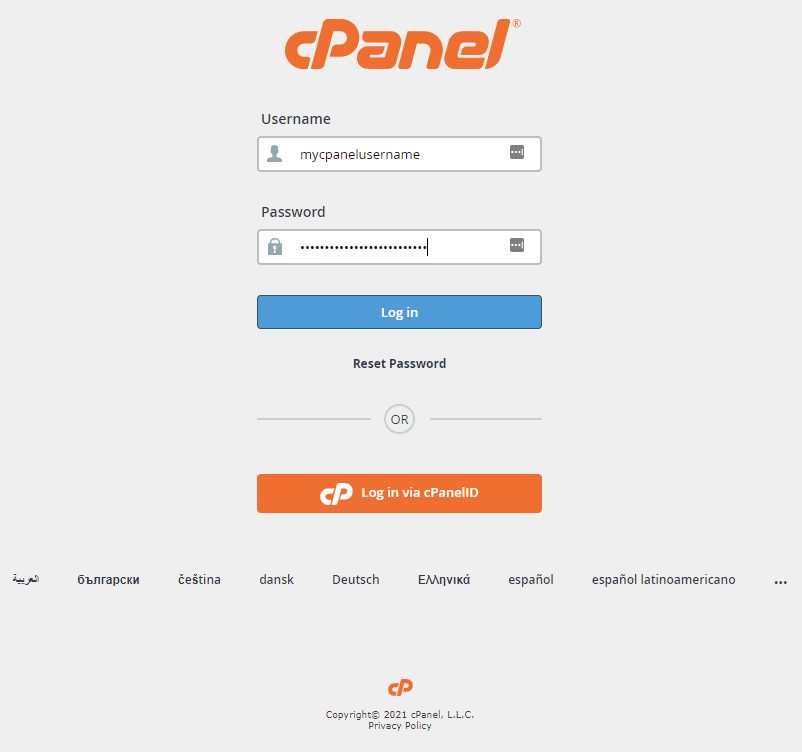
2. In the Email section, click Email Accounts.
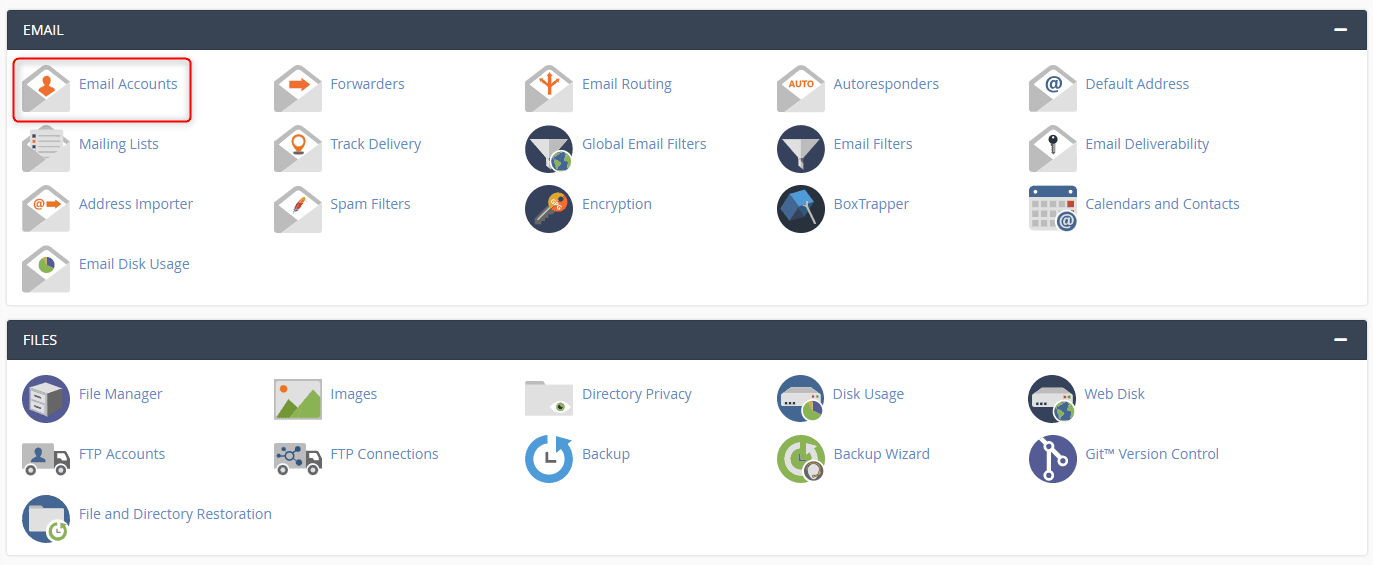
3. Click the Create button.

4. Enter the username for the new email address and assign it a password.
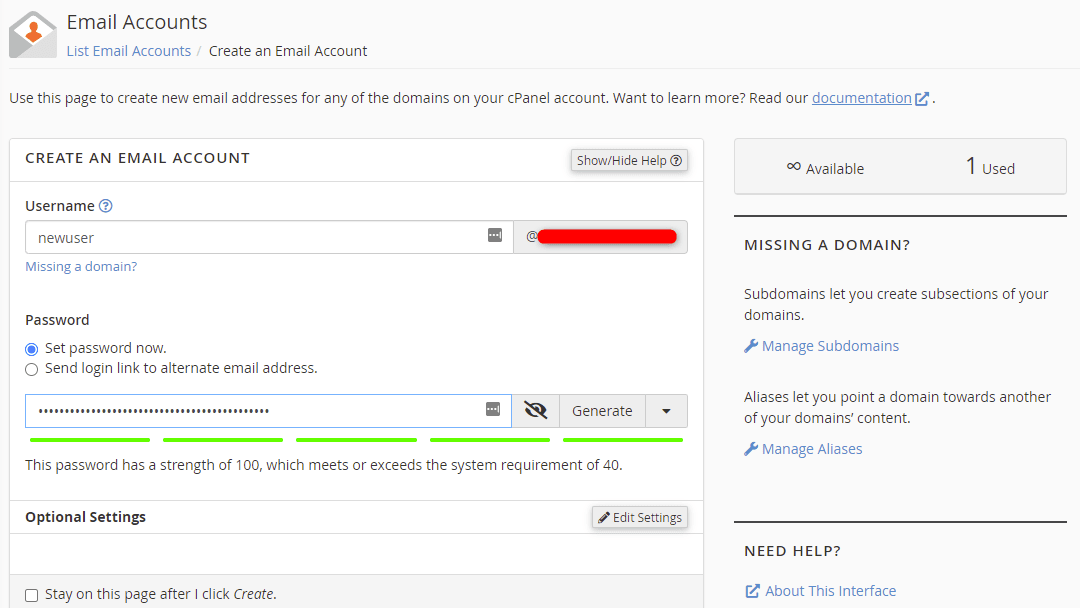
5. To set limitations for the email account prior to creating, click Edit Settings under the Optional Settings section.
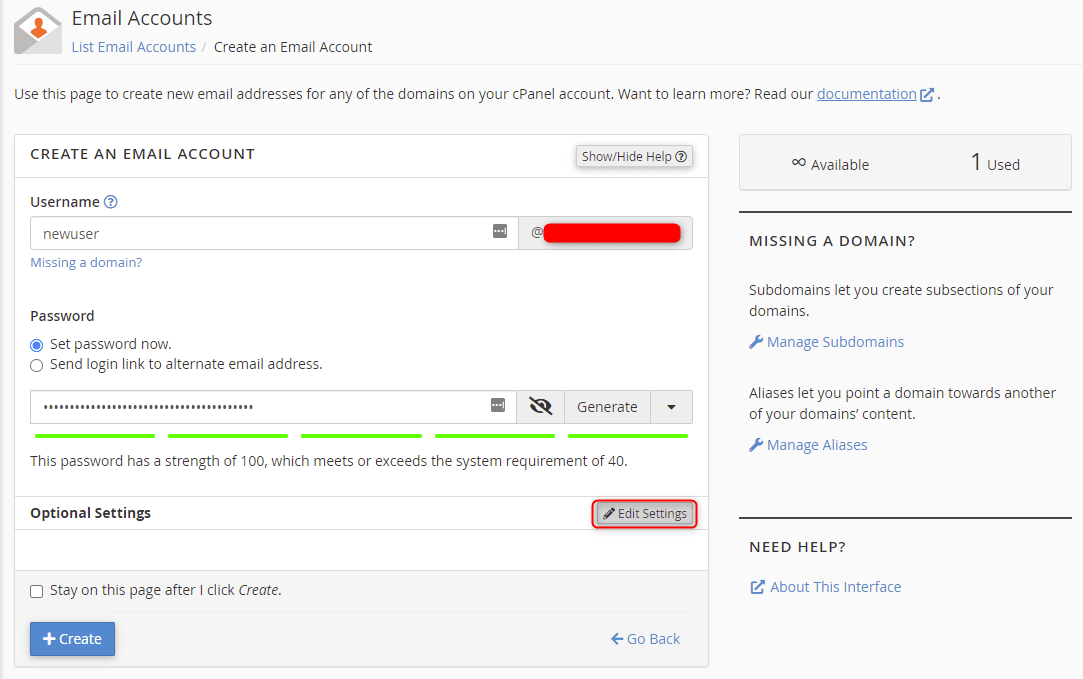
6. Once all fields are completed, click Create.
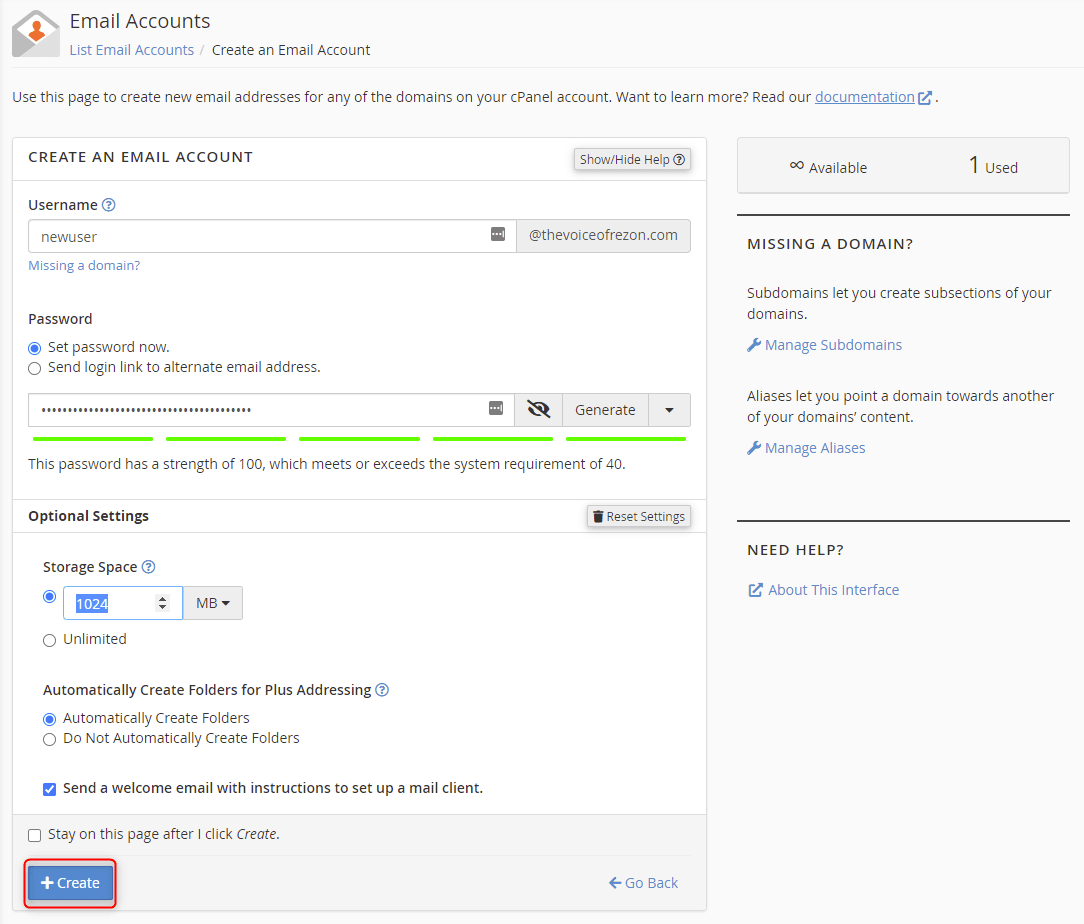
7. A message briefly appears in the upper-right corner that the new email account successfully created.

8. Access webmail for the account, change passwords, and other settings from the Email Accounts screen.
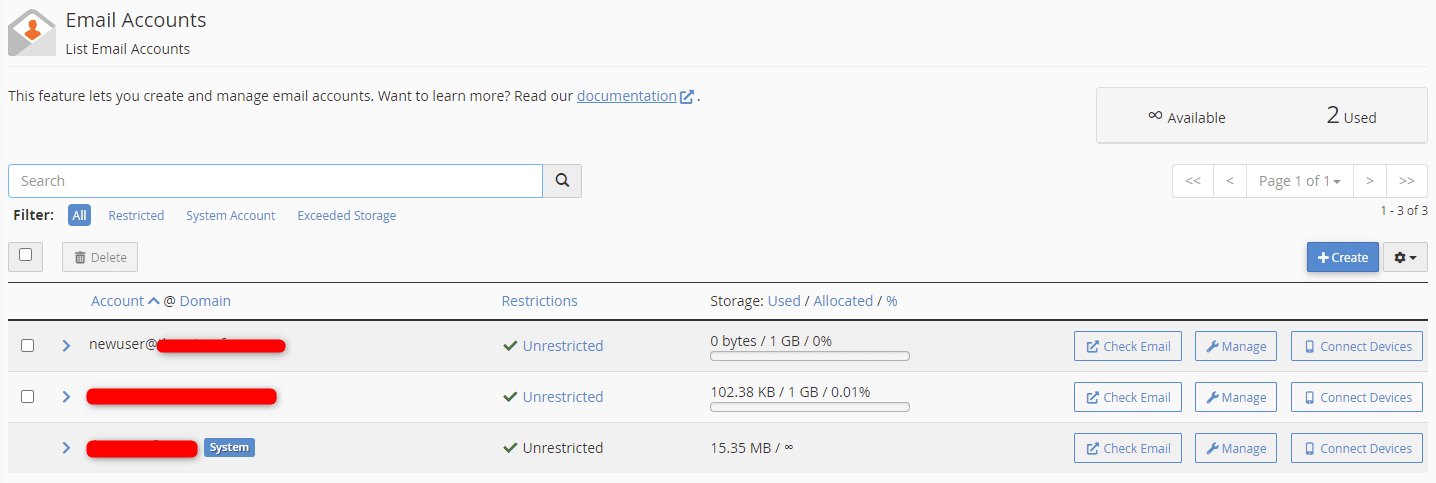
Wrapping Up
Following these steps on how to create an email account in cPanel helps you successfully create and manage email for your domains. Repeat the process as many times as necessary for the accounts you need.
Liquid Web offers cPanel options for VPS, cloud dedicated, and dedicated hosting. Contact our sales team today to get started.
The cPanel series continues with the next tutorial on How To Set a Default Address in cPanel.
Related Articles:

About the Author: Ronald Caldwell
Ron is a Technical Writer at Liquid Web working with the Marketing team. He has 9+ years of experience in Technology. He obtained an Associate of Science in Computer Science from Prairie State College in 2015. He is happily married to his high school sweetheart and lives in Michigan with her and their children.
Our Sales and Support teams are available 24 hours by phone or e-mail to assist.
Latest Articles
How to use kill commands in Linux
Read ArticleChange cPanel password from WebHost Manager (WHM)
Read ArticleChange cPanel password from WebHost Manager (WHM)
Read ArticleChange cPanel password from WebHost Manager (WHM)
Read ArticleChange the root password in WebHost Manager (WHM)
Read Article


